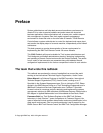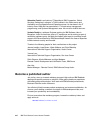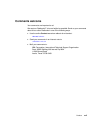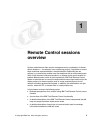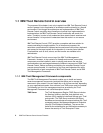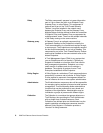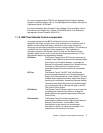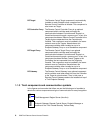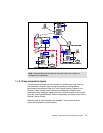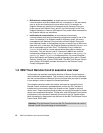Chapter 1. Remote Control sessions overview 5
Managed Node A Tivoli Managed Node runs the same software that runs
on a TMR Server. Managed Nodes maintain their own
Object DataBases, which can be accessed by the TMR
Server. When Managed Nodes communicate directly
with other Managed Nodes, they perform the same
communication or security operations as they would
perform with the TMR Server. Although there is no clear
distinction between managed systems and managing
systems, the introduction of the Endpoints architecture
leads to a paradigm shift. Managed Nodes are
considered to be managing systems (hosting the
desktop or running as a gateway), whereas endpoints
are the managed systems.
Endpoint Manager The Endpoint Manager establishes and maintains the
relationship between an Endpoint and its assigned
Gateway. It is involved in taking the Endpoint in charge
when its assigned Gateway is no longer responding. It is
also involved in identifying the Gateways that an
Endpoint is assigned to when applications are trying to
contact the Endpoint. The Endpoint Manager runs on top
of the TMR Server and is automatically created during
the TMR Server installation process.
Endpoint Gateway The Endpoint Gateway provides access to the Endpoint
methods and provides the communications with the TMR
Server that the Endpoints occasionally require. A single
Gateway can support communications with thousands of
Endpoints and can launch methods on an Endpoint or
run methods on the Endpoint’s behalf. A Gateway is
created on an existing managed node.
Endpoint Proxy An Endpoint Proxy is an optional component that
emulates Endpoints to the Gateway to simplify the Tivoli
communications in a firewall environment through a
common port. The Endpoint Proxy funnels requests for
specific Endpoints through a single TCP/IP port and
passes it down to a Relay or a Gateway Proxy. This
component is part of the Tivoli Firewall Security Toolbox
and must be installed on the same network zone as the
Tivoli Endpoint Gateway on which it is connected.



